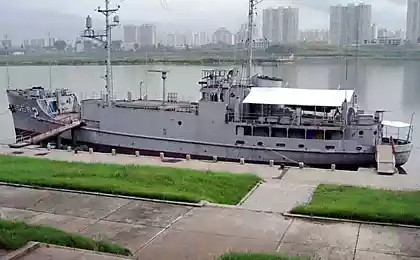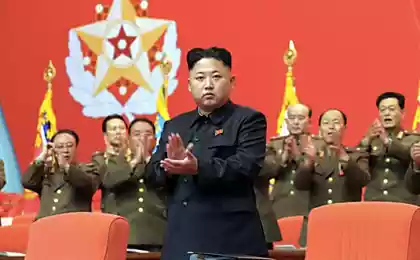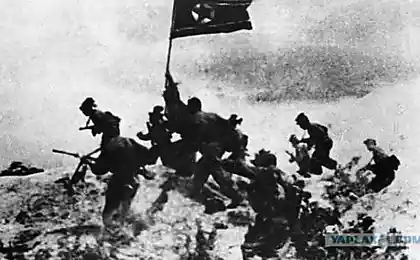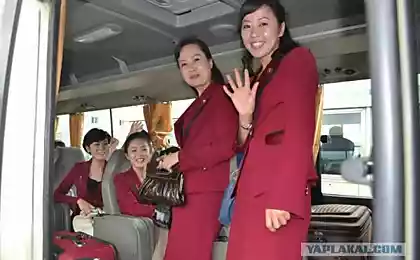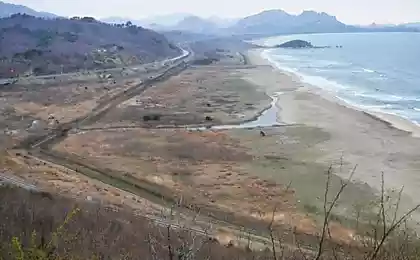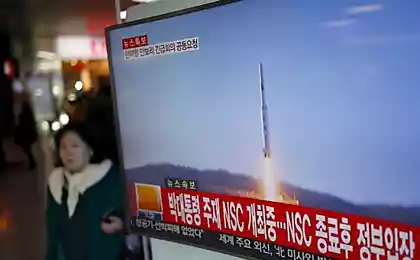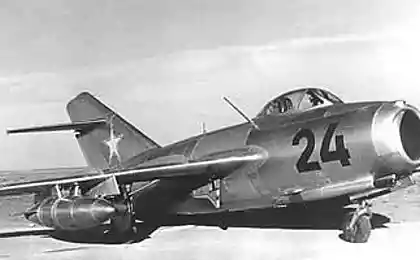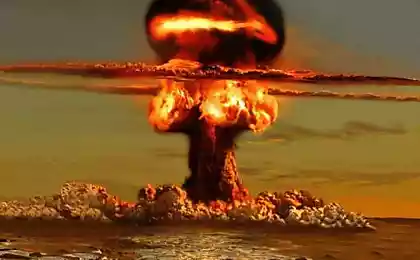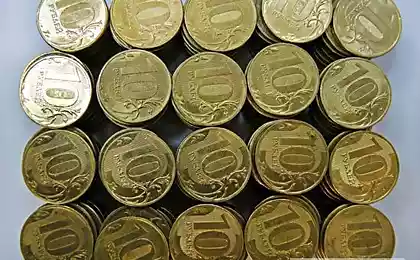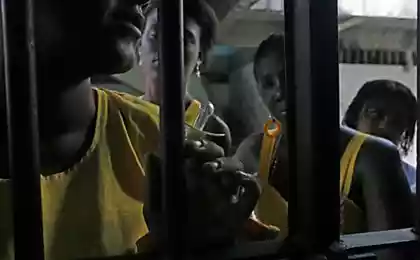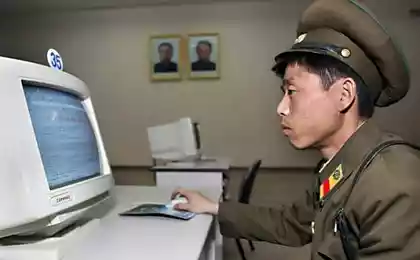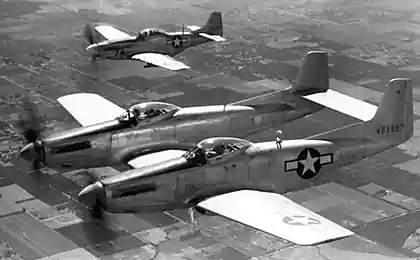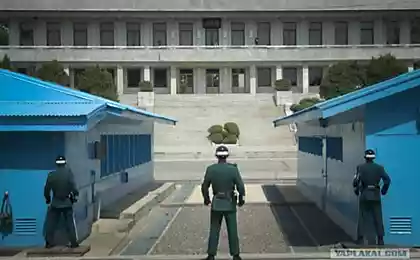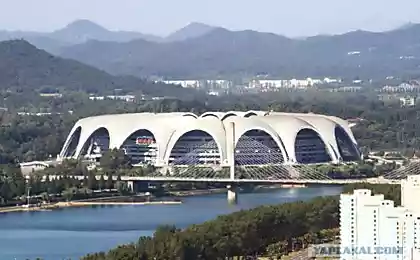1356
20 Photos Cruel most closed prisons in the world - North Korea
Today, anyone, of course, if you have money, can arrange a little entertainment tour to North Korea. Tour with funny selfie on an exotic background, under the supervision of secret services and special purpose guides where any unauthorized deviation from the route and other reckless acts are punishable. In the best case - the immediate expulsion, in the worst (as it happens mostly with Americans) - long sentence to labor camps. But no matter how scary it may sound, we should not confuse the "prosperous" zone for foreigners to these prisons for Koreans themselves. The authorities refuse to provide information and especially to allow international inspections. For information about what is really going on behind the barbed wire, gather the crumbs. Basically this information from former prisoners of the 80s - 90s, but there is a more recent history. Anews.com talks about what is known.
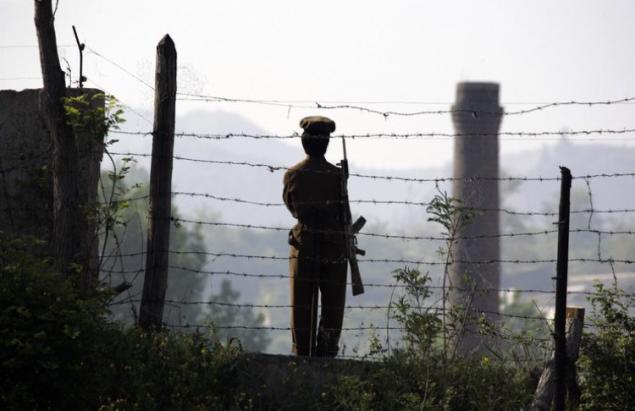
The fact that conditions in prisons and camps, the most terrifying, is not difficult to guess. Guards specially trained brutal treatment of prisoners: torture, secret and public executions for them - the usual routine, and even fun. But already there are the highest levels of mortality due to hunger, disease and accidents during hard labor because people actually condemned to death, do not have health care. Many things, such as bicycles, clothing, as well as products made and grown heavy manual labor of hundreds of thousands of prisoners. not only men serve in the protection of the camp:
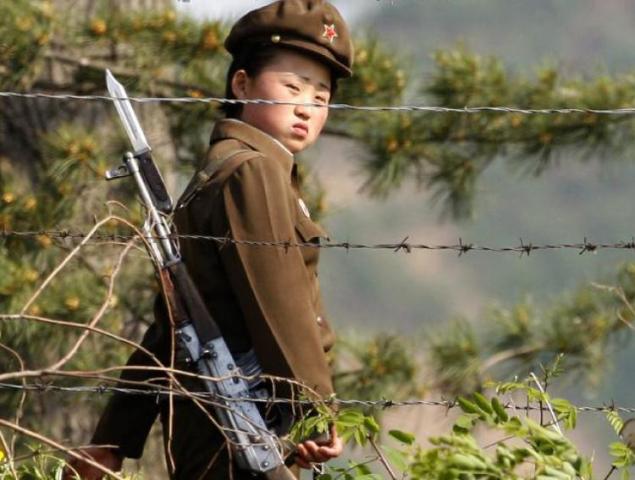
Camps are divided into two types: labor colony for political prisoners (now in the country, presumably, these 6 colonies) and "re-education centers" for criminals (they are between 15 and 20). To get to the number of political prisoners is easier: for example, the South Korean sang a song or accidentally damaged a portrait of the nation's leaders (enough to pour tea on a newspaper with a picture of them) - and now without trial "criminal" relocated to the camp. And together with all the nearest relatives: parents, children, brothers, sisters, and sometimes even grandparents and grandchildren - all of them are considered "guilty by association." In most cases, the camp becomes their home for a lifetime. Propaganda slogans and portraits of Kim Jong Il and Kim Il Sung, North Korea's view of the settlement with the Chinese side (photo Reuters):

Olonia located in remote mountain valleys, completely cut off from the world. In fact, the prisoners turned into slaves, engaged in heavy and dangerous work, using the most primitive tools - mainly in the mines and in agriculture. re-education centers similar to the classic prison - a vast complex of prison buildings surrounded by high walls. There come the real criminals, but on an equal footing with them serving sentences and many ordinary Koreans, who have decided on the "crime" of poverty and hopelessness (food stolen, involved in the illicit trade, tried to cross the border, etc.). This photo was taken in the demilitarized zone separating the two Koreas. But it gives at least a partial picture of how the camp area can look.
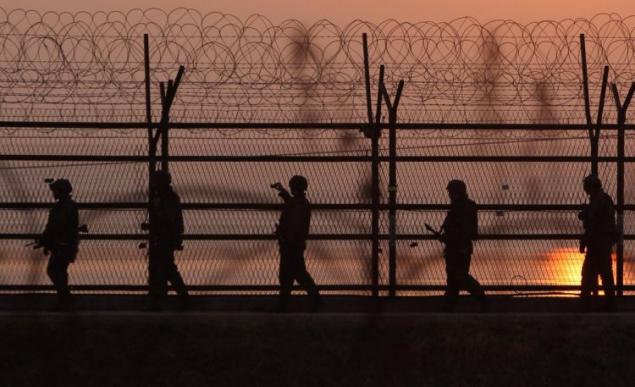
The detention center also employed slave labor - mainly in prison factories. Those who are unable to fulfill the norm, tortured or permanently placed in a special chamber, so tiny that it can neither stand nor lie at full height. Picture of the artist on the basis of the testimony of Kim Kwang-il, who has spent 2 years in the camps and in 2009 escaped to South Korea:
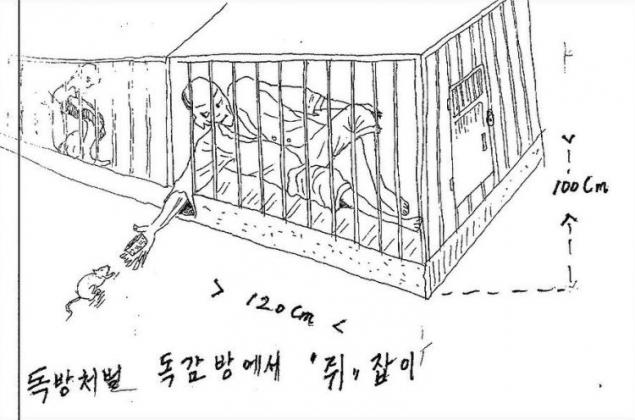
In contrast to the colonies for political prisoners in re-education centers, prisoners after the day's work is subjected to indoctrination, forcing to memorize a speech Kim Il Sung and Kim Jong Il held "rites of self-criticism and repentance." In South Korea, there are so-called "training camps of self-denial", organized by the military to civilians, to those (of course, optional) to "strengthen the spirit and the body." In this image, the heavy six-day training session held schoolchildren and doshkolyata. In North Korea, children are forced to camp hauling logs 365 days a year, with the starved and subjected to beatings. (Photo by Reuters).
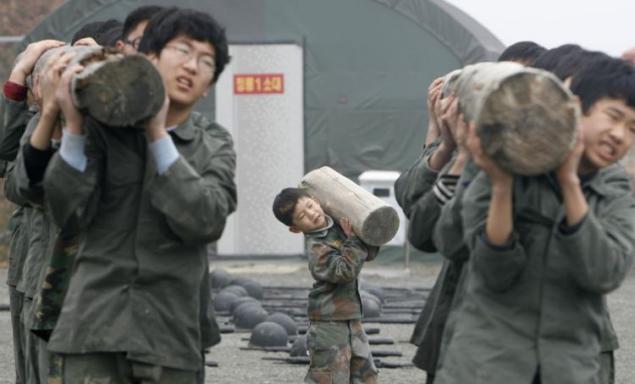
Due to eyewitnesses, we can learn the details of everyday life in specific camps.
< Hwaseong camp (correctional labor colony №16)
The largest camp in the country (about 560 square kilometers -. Both Volgograd and Vladivostok), of course, is not marked on the maps, but on clear satellite images you can see the gate and fence with towers on the perimeter. Here, political prisoners, or as they are called, "counter-revolutionary and anti-party elements," the number of 20 thousand people serving life sentence without possibility of release. This camp buildings, as they show a satellite Google map: as you can see, the objects smeared
.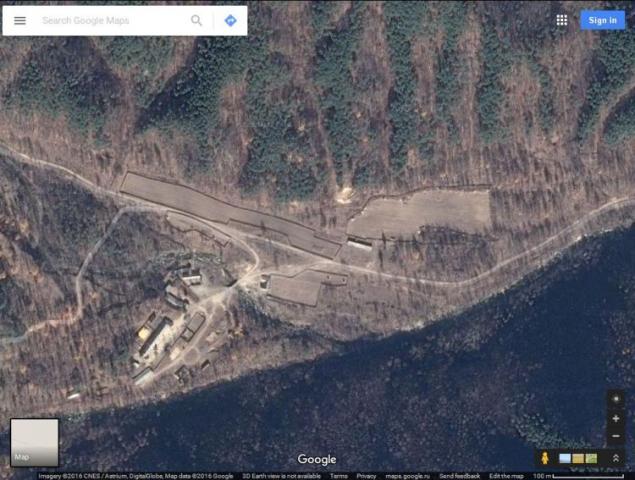
Just 2 kilometers from the western border of the DPRK camp holds its underground nuclear tests: the last was on January 6 this year, earlier - in 2006, 2009 and 2013. Defectors told that political prisoners are forced to dig tunnels and build underground facilities in the radioactive zones
Witnesses There are only two: a teenager - a relative of one of the prisoners entered the camp together with the whole family.. when he was 13, and one Lee (not real name) - a former bodyguard of Hwaseong. According to the latter, the family members upon arrival at the camp are separated so that they can never meet. Prior employment convicts go 10 km on foot, in winter often at 25-degree frost.
As if the task was not executed prisoners, but he saw them strangled with wire, wooden sticks were killed, forced to dig their own graves and killed a powerful blow of the hammer on the head.
Torture "dove": gnarled prisoners hung back by the arms and beaten to a bloody vomiting
.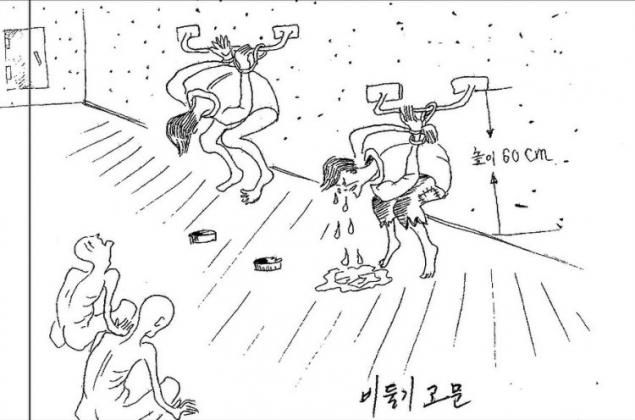
"Scales, plane, motorcycle": prisoners are forced to stand in such awkward positions, until they collapse unconscious
.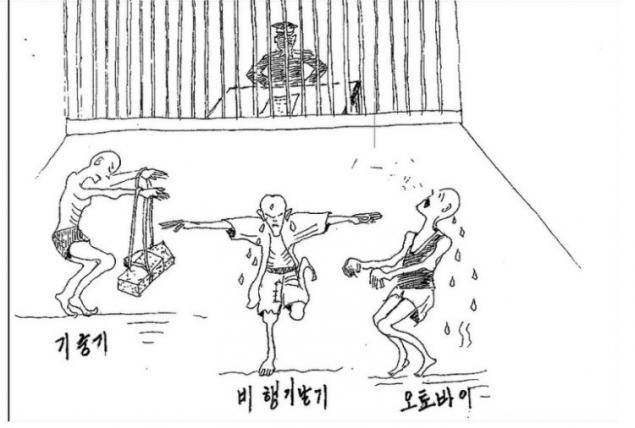
foot guard pushes the prisoner into a narrow opening in the wall.
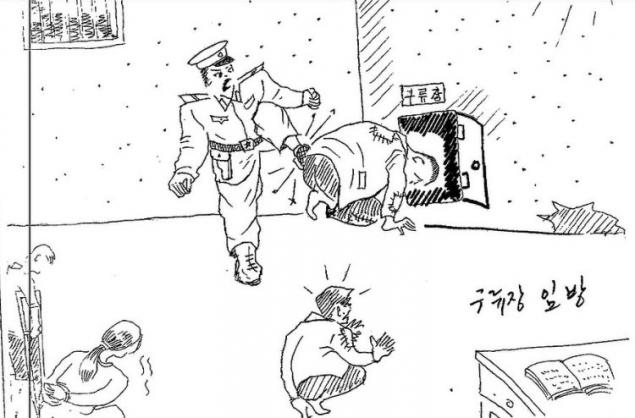
According to Li, Hwaseong guards did not believe torture or cruel mockery. Moreover, they boast to each other by their sadistic methods and guilt them unknown because prison staff totally "brainwashed».
It does not stand on ceremony with either women or children. Women guards raped, then killed often secretly, so as not to spread rumors (in this case they are called officially "missing"), as pregnant women are punished by sending to the hard work, to provoke a miscarriage. Or make a forced abortion.
Torture "The Hours": the guards called at random time - a pregnant woman should show it. This continues to dehydration.
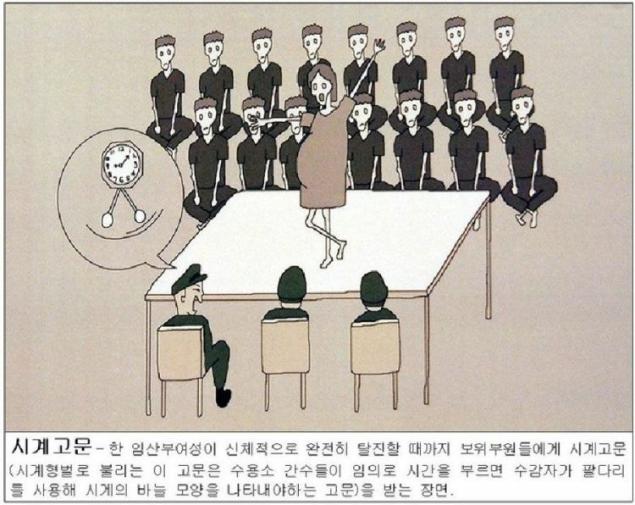
Camp Ёdok (correctional labor colony №15)
The camp is divided into two zones: the "total control zone" and "revolutionary zone". First put the people who, according to the authorities, have committed crimes against the regime or are politically unreliable (for example, the North Koreans who have visited Japan and Christians). They would never release. In the 90 years under the "total control" contained 30 thousand people, including about 6,000 Christians.
Warden at the gate of the women's prison near the Chinese border (photo by Reuters):
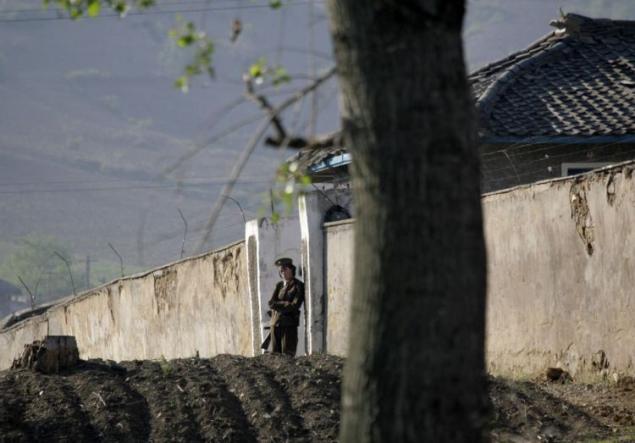
The "revolutionary zone" send "non-dangerous criminals", they are released after serving their term - unless, of course, they manage to survive in the harshest conditions. In this part of the camp, as you might guess, much less prisoners (in the 90s was 16, 5 thousand).
Ёdoka Total area - 370 square meters. kilometers (more than the Rostov-on-Don and Krasnoyarsk).
Approximate Ёdok camp area on Google satellite map:
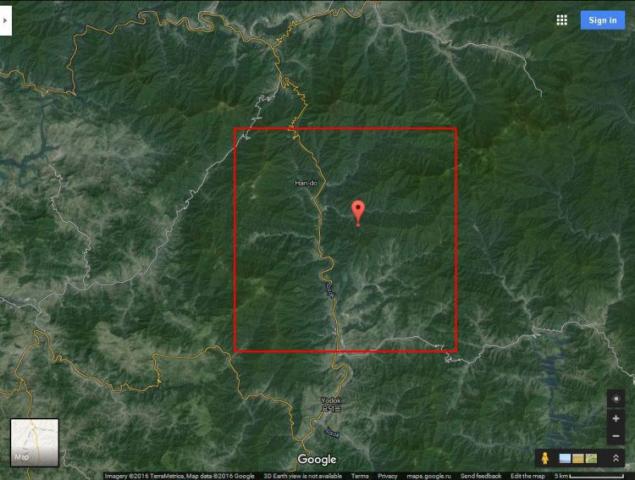
The camp is surrounded by a 4-meter-high fence of barbed wire, which started up by electricity (witnesses recalled how she sparkles in the rainy days), and watchtowers along the entire perimeter. The Protection - 1000 machine gunners with dogs and hand grenades
. North Korean soldiers to train the dogs to exercise (KCNA photo, Reuters):
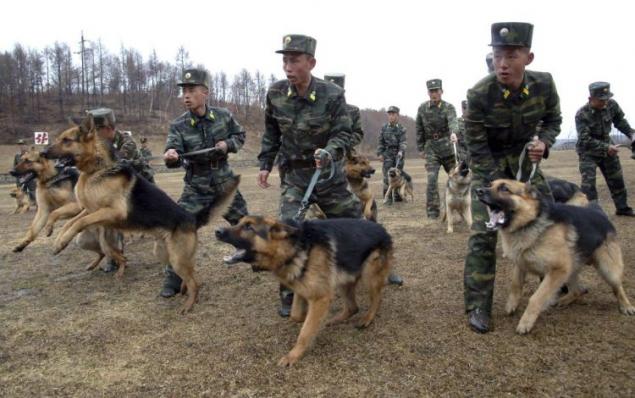
Barracks for prisoners look worse than pens: clay walls, thatched roofs, not to protect against rain, lined with straw floor. One area of 50 square meters room. meters divided 30-40 people. The cameras never heated, so in winter, 20 degrees of frost, the prisoners frostbitten ears and limbs.
Still a mystery shooting, allegedly carried out in the camp and shown on Japanese TV:
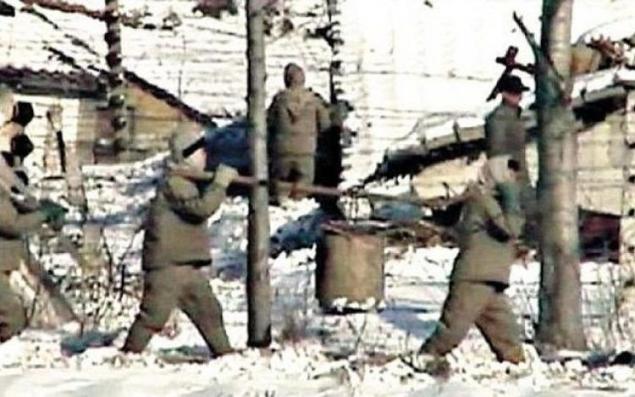
full reigns unsanitary conditions in the camp: no full shower, no laundry, and only one toilet for 200 prisoners. Prison clothing is transferred from one to the other, it is removed from the dead, and give newcomers.
South Korean soldiers get the experience of being in the "North Korean prison cell»:

The guards forced prisoners to communicate with each other and especially distinguished appoint "elders" of the inmates in groups. If at least one person is not working properly, then punish the whole group. It creates an atmosphere of anger and hostility, precludes any solidarity and mutual assistance - turns the system "for surveillance of all»
. In the 80's - 90's prisoners worked 7 days a week, in the summer - from 4 am to 8 pm, in the winter - from 5:30 am. In addition to working standards, they should prosper in the "lessons of ideology." Those who, for example, not memorized the instructions of Kim Il Sung, deprived of sleep, or receive a reduced ration. However, even the "normal", not abbreviated food is so scarce that the prisoners are fed trapped rodents and snakes to survive.
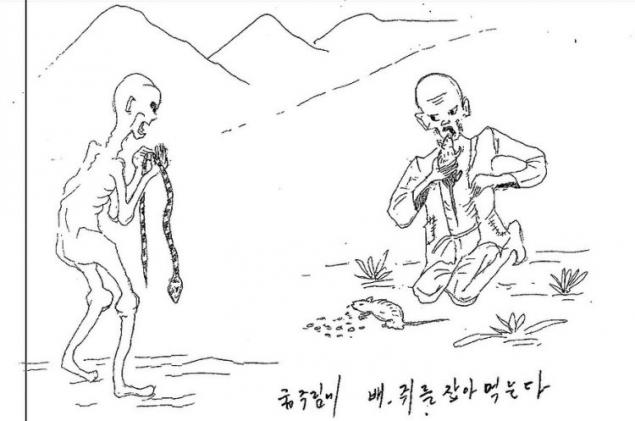
In the new century, it seems to have taken place some improvement, although it is difficult to even call this word. Earlier zeks given 150-200 grams shun corn brew, now, the stories, they get a vegetable soup and a bowl of rice with beans and corn. Still portions are so small that often the father steals food from his own son. And anything Godea in food (such as corn, which provide prisoners for landing) mixed with feces. However, according to eyewitnesses, many still manage to steal them, wash and eat.
This dinner of the North Korean woman who had lost their homes after the typhoons and floods. Approximately the portion receive convicts, it is possible that one full day.

Issued from the camp put on a hand stamp, undertakes to keep quiet about the camp life. The inscription reads: "I will be executed if Ёdoka shall bring the secrets." Therefore, the stories can be heard only from the North Koreans, who were able to flee abroad
Witness:. 48-year-old Jeon Gwang-il, accused of spying for the fact that during a trip to China in contact with the citizen South Korea. He spent Ёdoke 3 years, from 2000 to 2003, then risked their lives to cross the border to the South. The former prisoner said that the rise in the camp was at 5 am, from 6 to 12 - work in the fields, then an hour for lunch, from 13 to 19 - work again, dinner, then "political re-education." And until you memorize the lessons learned, we can not go to sleep.
"There are two legal ways to kill prisoners: beaten to death and doom to starvation - he told Jeong Gwang Il. - Usually people are already severely weakened, dying without food for 2 weeks. " He says that the bodies are not buried because the ground freezes strongly in winter, and sent "to the warehouse." In March, the prisoners are forced to clean these "warehouses". By the time the half-decayed bodies are eaten by rodents and insects, and they are simply thrown into the pit, like garbage.
Young North Korean leader Kim Jong Un inspects border observation post. Does he watched as the scene in the prison? (Photo: KCNA, Reuters)

For obvious reasons, the government of the DPRK has never sent to such camps convicted foreigners. They were kept in complete isolation (except for a couple of security guards, who are forbidden to engage in conversation), are fed three times a day (without abundance, but still), compliance with hygiene standards (the cells have showers). Torture does not apply to them, and give the work a more or less feasible - for example, fruit trees dig
. Tourists looking at the North Korean shore with an observation post in South Korea not far from the demilitarized zone:
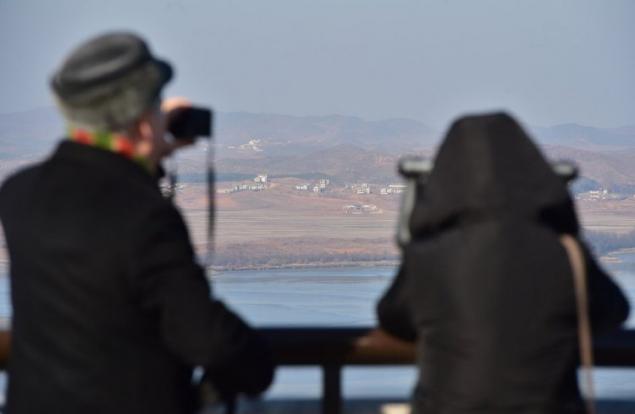
However, the verdicts are often huge time (American student just the other day was given 15 years for being ripped off at the campaign poster) end with brief stints for foreigners and deportation to their homeland.
Loading ... Loading ...
Liked? Share with your friends!
Loading ... Loading ...

The fact that conditions in prisons and camps, the most terrifying, is not difficult to guess. Guards specially trained brutal treatment of prisoners: torture, secret and public executions for them - the usual routine, and even fun. But already there are the highest levels of mortality due to hunger, disease and accidents during hard labor because people actually condemned to death, do not have health care. Many things, such as bicycles, clothing, as well as products made and grown heavy manual labor of hundreds of thousands of prisoners. not only men serve in the protection of the camp:

Camps are divided into two types: labor colony for political prisoners (now in the country, presumably, these 6 colonies) and "re-education centers" for criminals (they are between 15 and 20). To get to the number of political prisoners is easier: for example, the South Korean sang a song or accidentally damaged a portrait of the nation's leaders (enough to pour tea on a newspaper with a picture of them) - and now without trial "criminal" relocated to the camp. And together with all the nearest relatives: parents, children, brothers, sisters, and sometimes even grandparents and grandchildren - all of them are considered "guilty by association." In most cases, the camp becomes their home for a lifetime. Propaganda slogans and portraits of Kim Jong Il and Kim Il Sung, North Korea's view of the settlement with the Chinese side (photo Reuters):

Olonia located in remote mountain valleys, completely cut off from the world. In fact, the prisoners turned into slaves, engaged in heavy and dangerous work, using the most primitive tools - mainly in the mines and in agriculture. re-education centers similar to the classic prison - a vast complex of prison buildings surrounded by high walls. There come the real criminals, but on an equal footing with them serving sentences and many ordinary Koreans, who have decided on the "crime" of poverty and hopelessness (food stolen, involved in the illicit trade, tried to cross the border, etc.). This photo was taken in the demilitarized zone separating the two Koreas. But it gives at least a partial picture of how the camp area can look.

The detention center also employed slave labor - mainly in prison factories. Those who are unable to fulfill the norm, tortured or permanently placed in a special chamber, so tiny that it can neither stand nor lie at full height. Picture of the artist on the basis of the testimony of Kim Kwang-il, who has spent 2 years in the camps and in 2009 escaped to South Korea:

In contrast to the colonies for political prisoners in re-education centers, prisoners after the day's work is subjected to indoctrination, forcing to memorize a speech Kim Il Sung and Kim Jong Il held "rites of self-criticism and repentance." In South Korea, there are so-called "training camps of self-denial", organized by the military to civilians, to those (of course, optional) to "strengthen the spirit and the body." In this image, the heavy six-day training session held schoolchildren and doshkolyata. In North Korea, children are forced to camp hauling logs 365 days a year, with the starved and subjected to beatings. (Photo by Reuters).

Due to eyewitnesses, we can learn the details of everyday life in specific camps.
< Hwaseong camp (correctional labor colony №16)
The largest camp in the country (about 560 square kilometers -. Both Volgograd and Vladivostok), of course, is not marked on the maps, but on clear satellite images you can see the gate and fence with towers on the perimeter. Here, political prisoners, or as they are called, "counter-revolutionary and anti-party elements," the number of 20 thousand people serving life sentence without possibility of release. This camp buildings, as they show a satellite Google map: as you can see, the objects smeared
.

Just 2 kilometers from the western border of the DPRK camp holds its underground nuclear tests: the last was on January 6 this year, earlier - in 2006, 2009 and 2013. Defectors told that political prisoners are forced to dig tunnels and build underground facilities in the radioactive zones
Witnesses There are only two: a teenager - a relative of one of the prisoners entered the camp together with the whole family.. when he was 13, and one Lee (not real name) - a former bodyguard of Hwaseong. According to the latter, the family members upon arrival at the camp are separated so that they can never meet. Prior employment convicts go 10 km on foot, in winter often at 25-degree frost.
As if the task was not executed prisoners, but he saw them strangled with wire, wooden sticks were killed, forced to dig their own graves and killed a powerful blow of the hammer on the head.
Torture "dove": gnarled prisoners hung back by the arms and beaten to a bloody vomiting
.

"Scales, plane, motorcycle": prisoners are forced to stand in such awkward positions, until they collapse unconscious
.

foot guard pushes the prisoner into a narrow opening in the wall.

According to Li, Hwaseong guards did not believe torture or cruel mockery. Moreover, they boast to each other by their sadistic methods and guilt them unknown because prison staff totally "brainwashed».
It does not stand on ceremony with either women or children. Women guards raped, then killed often secretly, so as not to spread rumors (in this case they are called officially "missing"), as pregnant women are punished by sending to the hard work, to provoke a miscarriage. Or make a forced abortion.
Torture "The Hours": the guards called at random time - a pregnant woman should show it. This continues to dehydration.

Camp Ёdok (correctional labor colony №15)
The camp is divided into two zones: the "total control zone" and "revolutionary zone". First put the people who, according to the authorities, have committed crimes against the regime or are politically unreliable (for example, the North Koreans who have visited Japan and Christians). They would never release. In the 90 years under the "total control" contained 30 thousand people, including about 6,000 Christians.
Warden at the gate of the women's prison near the Chinese border (photo by Reuters):

The "revolutionary zone" send "non-dangerous criminals", they are released after serving their term - unless, of course, they manage to survive in the harshest conditions. In this part of the camp, as you might guess, much less prisoners (in the 90s was 16, 5 thousand).
Ёdoka Total area - 370 square meters. kilometers (more than the Rostov-on-Don and Krasnoyarsk).
Approximate Ёdok camp area on Google satellite map:

The camp is surrounded by a 4-meter-high fence of barbed wire, which started up by electricity (witnesses recalled how she sparkles in the rainy days), and watchtowers along the entire perimeter. The Protection - 1000 machine gunners with dogs and hand grenades
. North Korean soldiers to train the dogs to exercise (KCNA photo, Reuters):

Barracks for prisoners look worse than pens: clay walls, thatched roofs, not to protect against rain, lined with straw floor. One area of 50 square meters room. meters divided 30-40 people. The cameras never heated, so in winter, 20 degrees of frost, the prisoners frostbitten ears and limbs.
Still a mystery shooting, allegedly carried out in the camp and shown on Japanese TV:

full reigns unsanitary conditions in the camp: no full shower, no laundry, and only one toilet for 200 prisoners. Prison clothing is transferred from one to the other, it is removed from the dead, and give newcomers.
South Korean soldiers get the experience of being in the "North Korean prison cell»:

The guards forced prisoners to communicate with each other and especially distinguished appoint "elders" of the inmates in groups. If at least one person is not working properly, then punish the whole group. It creates an atmosphere of anger and hostility, precludes any solidarity and mutual assistance - turns the system "for surveillance of all»
. In the 80's - 90's prisoners worked 7 days a week, in the summer - from 4 am to 8 pm, in the winter - from 5:30 am. In addition to working standards, they should prosper in the "lessons of ideology." Those who, for example, not memorized the instructions of Kim Il Sung, deprived of sleep, or receive a reduced ration. However, even the "normal", not abbreviated food is so scarce that the prisoners are fed trapped rodents and snakes to survive.

In the new century, it seems to have taken place some improvement, although it is difficult to even call this word. Earlier zeks given 150-200 grams shun corn brew, now, the stories, they get a vegetable soup and a bowl of rice with beans and corn. Still portions are so small that often the father steals food from his own son. And anything Godea in food (such as corn, which provide prisoners for landing) mixed with feces. However, according to eyewitnesses, many still manage to steal them, wash and eat.
This dinner of the North Korean woman who had lost their homes after the typhoons and floods. Approximately the portion receive convicts, it is possible that one full day.

Issued from the camp put on a hand stamp, undertakes to keep quiet about the camp life. The inscription reads: "I will be executed if Ёdoka shall bring the secrets." Therefore, the stories can be heard only from the North Koreans, who were able to flee abroad
Witness:. 48-year-old Jeon Gwang-il, accused of spying for the fact that during a trip to China in contact with the citizen South Korea. He spent Ёdoke 3 years, from 2000 to 2003, then risked their lives to cross the border to the South. The former prisoner said that the rise in the camp was at 5 am, from 6 to 12 - work in the fields, then an hour for lunch, from 13 to 19 - work again, dinner, then "political re-education." And until you memorize the lessons learned, we can not go to sleep.
"There are two legal ways to kill prisoners: beaten to death and doom to starvation - he told Jeong Gwang Il. - Usually people are already severely weakened, dying without food for 2 weeks. " He says that the bodies are not buried because the ground freezes strongly in winter, and sent "to the warehouse." In March, the prisoners are forced to clean these "warehouses". By the time the half-decayed bodies are eaten by rodents and insects, and they are simply thrown into the pit, like garbage.
Young North Korean leader Kim Jong Un inspects border observation post. Does he watched as the scene in the prison? (Photo: KCNA, Reuters)

For obvious reasons, the government of the DPRK has never sent to such camps convicted foreigners. They were kept in complete isolation (except for a couple of security guards, who are forbidden to engage in conversation), are fed three times a day (without abundance, but still), compliance with hygiene standards (the cells have showers). Torture does not apply to them, and give the work a more or less feasible - for example, fruit trees dig
. Tourists looking at the North Korean shore with an observation post in South Korea not far from the demilitarized zone:

However, the verdicts are often huge time (American student just the other day was given 15 years for being ripped off at the campaign poster) end with brief stints for foreigners and deportation to their homeland.
Loading ... Loading ...
Liked? Share with your friends!
Loading ... Loading ...
30+ Ruthless dandies and ladies that await you in the Metro
At first glance, it seems the mansion. But it cost cheaper one-bedroom apartments!
